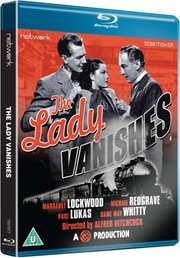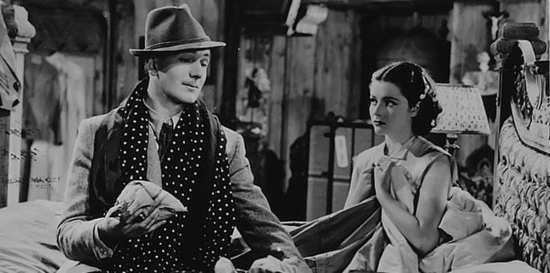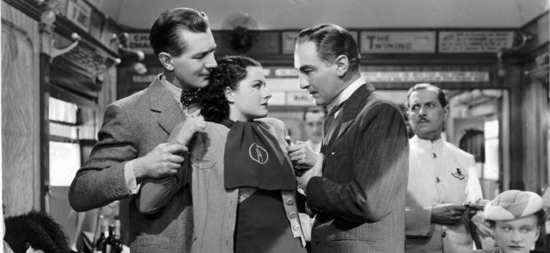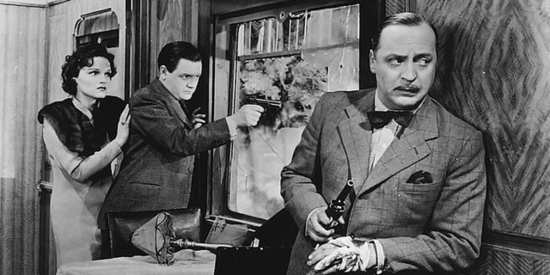Review for The Lady Vanishes
It’s almost impossible to make a list of your favourite Hitch films but ‘The Lady Vanishes’ would certainly appear somewhere in my personal top ten. Made in 1938 this classic comedy-thriller was one of his most popular features and arguably was instrumental in getting him a Hollywood pass.
Unusually though, despite this being archetypal Hitchcock with its perfect mix of comedy, romance and suspense, the film had originally been chalked for another director. Hitch picked it up after much of the pre-production was in place and the Launder and Gilliat penned script almost complete though there can be no doubting the individualistic stamp added by the great man.
If you haven’t seen it then you’ve missed a treat. It mixes comedy, thrills and romance in equal measure and is one of those films that, even when you know the twists, is infinitely re-watchable. Which is why it’s great that Network are releasing it in high-definition for the first time in the UK.
It’s a rip-roaring story featuring a stellar cast and predictably brilliant direction.
Starring a delightful Margaret Lockwood, an impossibly handsome Michael Redgrave, a suave to the point of smug Paul Lukas and a completely batty Dame May Whitty, it was expertly adapted by Sidney Gilliat and Frank Launder from the popular 1936 novel ‘The Wheel Spins’ by Ethel Lina White.
In short, and putting aside the character building introduction in a ‘foreign hotel’ in the fictitious country of Bandrika, the film ostensibly takes place on a moving train. A beautiful English society girl has been travelling with friends in advance of her imminent society marriage – about which she seems none too keen. As she is about to board the train back to London she is hit on the head by a window box. An elderly lady who she had met in the hotel helps her aboard and the two set off on the journey together. After taking tea together, she nods off and comes to find that the elderly lady has simply disappeared from her carriage and is nowhere to be found. To add to the mystery, everyone in the carriage denies ever having seen the lady and even the waiters deny having served the two of them earlier.
She is soon helped by a travelling musicologist (played by Redgrave) who, despite doubting her story to start with, begins to see the truth and sets about uncovering the mystery. It seems as if half the train are part of the conspiracy and progress proves tough. Another lady, wearing exactly the same clothes as Miss. Froy appears in the carriage to suggest that perhaps this was the lady that she has seen. It would seem that Miss Froy’s enemies are prepared to go to elaborate lengths to cover up her abduction. I shall say no more for fear of spoiling what is a joyous mystery un-fold.
For lighter relief, the film features Basil Radford and Naunton Wayne, who for the first time, play the characters Charters and Caldicott, two single-minded cricket enthusiasts who are rushing back to England to catch the last days of a Test match. They remain singularly un-phased by anything and it is not until the end of the film that they become convinced that there is an untoward plot afoot – and probably connected to Hitler’s rise to power in Germany though this is never clearly articulated. Without fuss or ado they are prepared to fight, but never losing their outward British sense of reserve!
Miss Froy, the lady who vanishes, is supposedly a former Governess and music teacher but the efforts that have been put into her abduction suggest that there must be something more to her. She is played with ditzy abandon to great effect by Dame May Whitty – a famous stage actress at the time.
Made in the Gainsborough Studios in Islington, London as well as on location in Hampshire, it was the penultimate film that Hitch was to make before heading out to Hollywood.
The film was an absolute smash hit on release, making stars of Redgrave (it was his first film) and Lockwood, as well as launching the comedy career for ‘Charters and Caldicott’ who went on to appear in a number of other films. More notably, with a few judicious cuts to remove the snide comments about Baseball being nothing more than ‘rounders’, as well as some of the cricket comments, the film was a huge success in New York as well. In fact, it was named Best Picture of 1938 by The New York Times.
The film has been newly transferred from the best available prints and is presented in 1080p in its original 1.33:1 aspect ratio. It’s a good transfer with a relatively few signs of wear and tear, and detail and contrast are excellent throughout.
There are disappointingly few extras here – just a trailer, an image gallery and some PDF materials which sadly I couldn’t access so cannot comment on, as well as an informative, if slightly stiff, introduction to the film from Charles Barr, film historian and academic. I would have welcomed an audio commentary from Barr as he has much to say but that is really a very small gripe.
Hitchcock fans have been spoiled in the last 12 months with an embarrassment of riches when it comes to HD transfers of his classic movies. ‘The Lady Vanishes’ is a welcome party of that campaign and I for one am delighted to upgrade.







































Your Opinions and Comments
Be the first to post a comment!